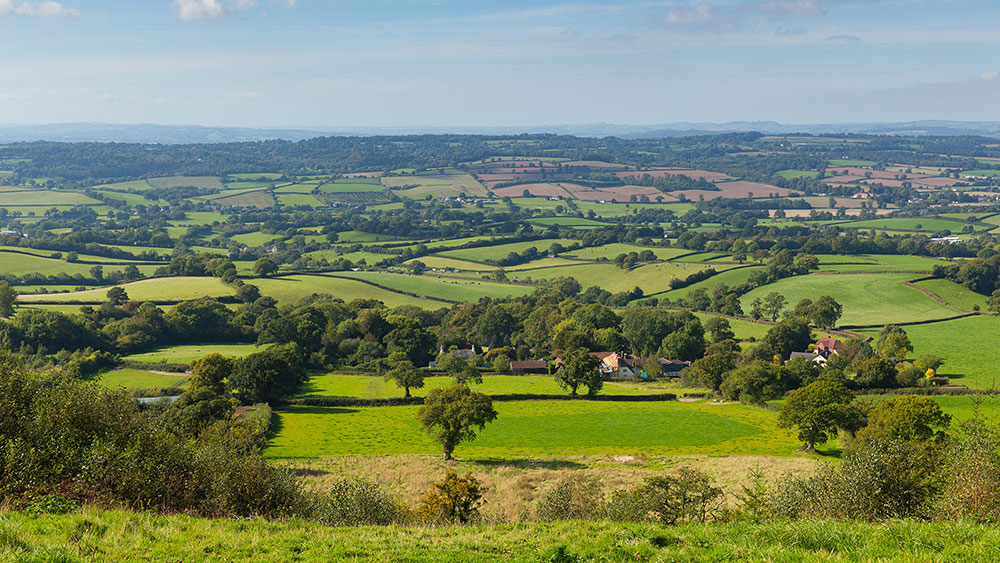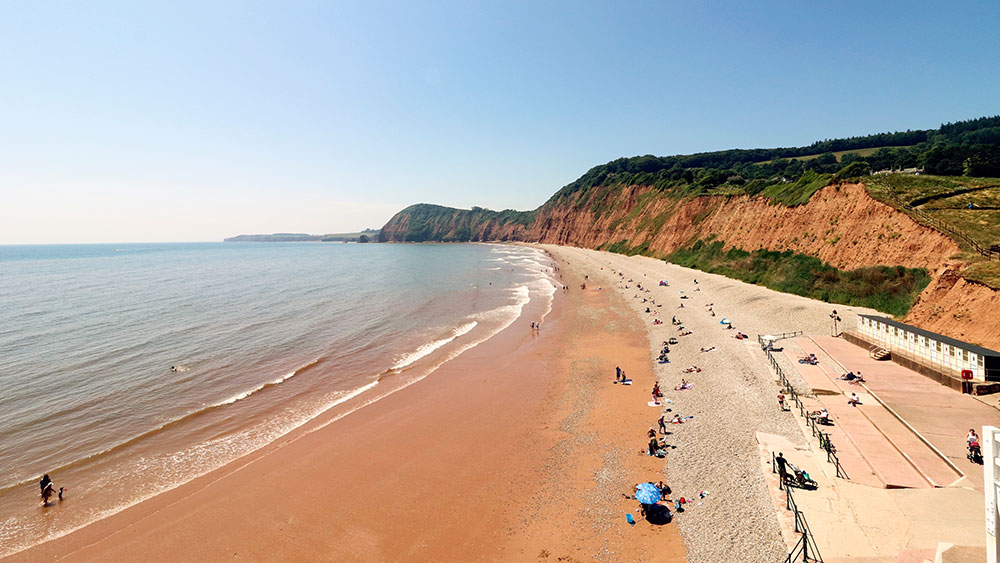Walking in East Devon
Discovering East Devon’s Most Enchanting Walking Trails
Here at Toad Hall Cottages, we love to hear about our guests’ walking adventures in the wonderful West Country, from discoveries of forgotten green lanes to snaps of your favourite vistas.
Helping us explore the weaving tracks and trails of East Devon is Eve Maunder of the East Devon Ramblers, a local group that’s part of the Ramblers national charity, which aims to promote the needs of walkers. We caught up with Eve to find out more about this captivating corner of Devon – two thirds of which is designated as an Area of Outstanding Natural Beauty (AONB) – and reveal some of the group’s favourite walks.
An interview with Eve Maunder, publicity officer for the East Devon Ramblers…
Welcome to our blog, Eve. What makes East Devon such a special place for ramblers to explore?
East Devon is a fabulous place to explore on foot. There are a multitude of well-worn routes that take in our lush, green landscape, the majestic coastline, and the area’s many pretty villages. Walkers can enjoy an abundance of magnificent coastal and countryside views and expect encounters with all sorts of amazing wildlife, whether that be the awesome sight of peregrine falcons diving for quarry from the cliff tops, or fallow deer grazing in the morning mist.
What do you enjoy most about rambling with a group?
Walking in a group is a great way to meet and make friends with likeminded people. The East Devon Ramblers group are a particularly sociable bunch, and we love welcoming newcomers.
Are holiday walkers welcome on your outings?
With a Ramblers membership, walkers are free to join any group around the country. Those walkers who are not members of the Ramblers are welcome to join us for three walks before taking out a Ramblers membership. It is advisable for anyone wanting to join a walk to contact the leader beforehand to ensure there is sufficient space.


How often do the East Devon Ramblers meet?
East Devon Ramblers meet on Wednesdays, Fridays and Sundays. We offer a choice of six walks each week. Walks are graded as leisurely, moderate, or strenuous, and vary in length from around 4 miles to 14 miles. Our group produces a programme where all our walks can be found. The programme can also be accessed via the East Devon Ramblers website.
What types of terrain do you encounter?
On coastal walks we are likely to encounter grassy cliff paths, which can be narrow in places but will then open up to reveal breathtaking views. Common features of our countryside walks include paths, stiles, and green lanes. Other walks embrace common land or woodland where the paths can present obstacles such as tree roots and uneven stony ground. Inevitably, walking in East Devon involves a few hills – flat walks in East Devon are rather elusive. The same walk can of course change depending on the seasons; what is an easy stroll along a Devon lane can prove challenging after heavy rainfall has turned the ground to sticky mud.
How precious is our right to roam?
The Ramblers organisation is not just about walking, it also plays an important role in protecting and enhancing our environment. The Ramblers works closely with town and countryside planning associations and The Wildlife Trusts to ensure that nature and rights of way are taken into account when developing areas. We also work to maintain public footpaths so that they remain open enabling walkers to get out and roam.
Could you explain to us a bit more about the Ramblers’ search for England’s lost paths?
The Ramblers organisation is currently involved in a project called ‘Don’t Lose Your Way’. This project is all about looking at paths that are at risk of being lost if they are not recorded on a definitive map. It is estimated that there are thousands of miles of paths at risk. These paths must be recorded so that they remain open for all to use in the years to come, and this has to be done by January 2026 or they will be lost forever. The Ramblers charity is supporting individuals from all over England and Wales to identify these lost rights of way and makes applications to local authorities to get them back on the map.
How can we ensure that we ramble respectfully?
Respect and value the environment by endeavouring to leave no trace, except your footsteps. Make sure all litter is taken home with you, all gates are closed behind you, and maintain the upmost respect for farmers and their livestock – remember to always keep dogs on leads near farm animals. Some Ramblers are so passionate about their environment that in their spare time they participate in voluntary work such as path clearance, riverbank maintenance, and litter picking.
What’s your best piece of advice for would-be ramblers?
If you are considering participating in some form of exercise, why not give rambling a try. Rambling is low cost, it’s easily accessible and requires very little specialist equipment. All you need is a waterproof coat and comfortable, sturdy footwear. If you haven’t participated in any form of exercise for some time, start off slowly. Aim to walk for 20 minutes every day and gradually increase your walking time.


Why is rambling so good for our health and wellbeing?
Getting out into the fresh air and making the most of the natural environment brings enormous physical and mental health benefits. Walking in a group is a great way to combat feelings of loneliness and isolation too.
For all those raring to explore the paths of East Devon, could you recommend some of your favourite walking routes?
There are dozens of fabulous paths to explore on foot in East Devon. These walks can be found in books that are available from Tourist Information Centres, libraries, and local bookshops, plus the Ramblers website is a very handy resource. Here are a few of my recommended walks for you all to enjoy…
Goat Walk, Topsham
Easy-going & flat (3 miles)
Start at Darts Farm, Topsham. Cross the road at the pedestrian crossing and join the cycle track heading towards Exmouth. Walk for around half-a-mile until you reach a bridge (on your right) that crosses the river. Bear right, taking the cycle track over the river until you reach the end of the path. At the metalled road turn left. Follow the road past the bird hide, where you can peek inside to enjoy enchanting views of the local wildfowl. Continue in the same direction until the road ends. You will find yourself on the Goat Walk. Continue along the raised riverside path, and if it’s warm and sunny, have a seat on one of the benches and admire the lovely scenes. Continue walking into the historic town of Topsham, and if you like, take some time to explore the pretty streets and browse the shops, cafés and its bustling antiques warehouse.
When you reach St Matthews Hall (on your right), it’s time to head back to Darts Farm. Just after the hall there is a mini roundabout. Turn right towards the railway station and cross the level crossing. Keep walking along the pavement until you reach another mini roundabout and pick up the footpath (also on your right). Follow the path until you see another bridge over the river. Head towards the bridge. Keep walking and you will see Darts Farm on your left. Call into Darts Farm for coffee, lunch or afternoon tea.
Budleigh Salterton to Otterton, and back.
Moderate walking that’s mostly flat. (Approx. 5.5 miles)
With your backs to the sea, start your walk from Lime Kiln car park in the characterful coastal town of Budleigh Salterton. At the bottom end of the car park is a narrow riverside path signposted ‘Otterton’. Take this path and keep walking until you reach White Bridge. Continue walking for about two miles until you reach a second bridge spanning the River Otter. You should now be at Otterton Mill, the ideal place to stop for a spot of lunch, a refreshing drink, or to enjoy a look round the craft shop and buy some freshly made bread.
Continue your walk into the charming village of Otterton and head for Maunders Hill (on your right). Walk up the hill, passing the turning for the church followed by a row of dwellings. Pick up the lane on your right. Carry on along the leafy lane until the road forks. Bear right and cross White Bridge. You should see the Lime Kiln car park on your left. Return to the start of your walk.
Other much-loved East Devon walks to consider…
- The East Devon Way
- The Sid Valley Ring
- Exeter Green Circle Walks
- Peak Hill
- Mutter’s Moor & the Lower Otter Valley
Happy Rambling,
Eve Maunder, East Devon Ramblers.
From character cottages in country villages to holiday cottages on the Jurassic Coast, take a look at our collection of self-catering cottages in East Devon.
